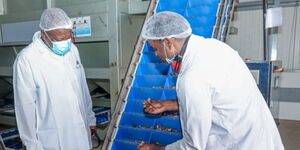Ever wondered how 560-tonne planes are moved to and from the hangar to the runway?
Pushback tractors, small specialised vehicles, play that role, further towing planes that break down on the runway.
According to aviation industry experts, Red Box Aviation, the vehicles can move heavy planes, some weighing more than 560 tonnes.
Kenyans.co.ke explains the three main features that make airport pushback tractors essential.
Powerful engines
Pushback tractors have powerful diesel-powered engines that carry at least 50 tonnes even when not towing planes.
For instance, the Eagle XM-30 used to move the Boeing 737 and Airbus A320 has a draw pull of 7,257.48 Kilograms-Force (KGF) with 74 horsepower (HP).
It has a 3.6-litre engine with 4 cylinders with a fuel capacity of 83 litres.
Large wheels
Their huge tyres and low profile make them stand out in airports.
The huge tyres provide much-needed traction by increasing the contact patch.
Ballast weights
According to industry experts, Aviation Learnings, manufacturers of pushback tractors detail the stock weight and ‘ballasted weight’.
“Ballasted weight refers to adding additional weight in a pushback tractor to improve its traction for more demanding pushback operations such as pushback during rain,” Aviation Learnings explain.
Additionally, they have tow bars that connect the tractor to the nose of a plane's landing gear.
However, there are also tow bar-less tractors that scoop the nose of the landing gear and lift the front tyre of the place off the ground.

KNEC Confirms Dates for 2025 KCSE Release News Just In











